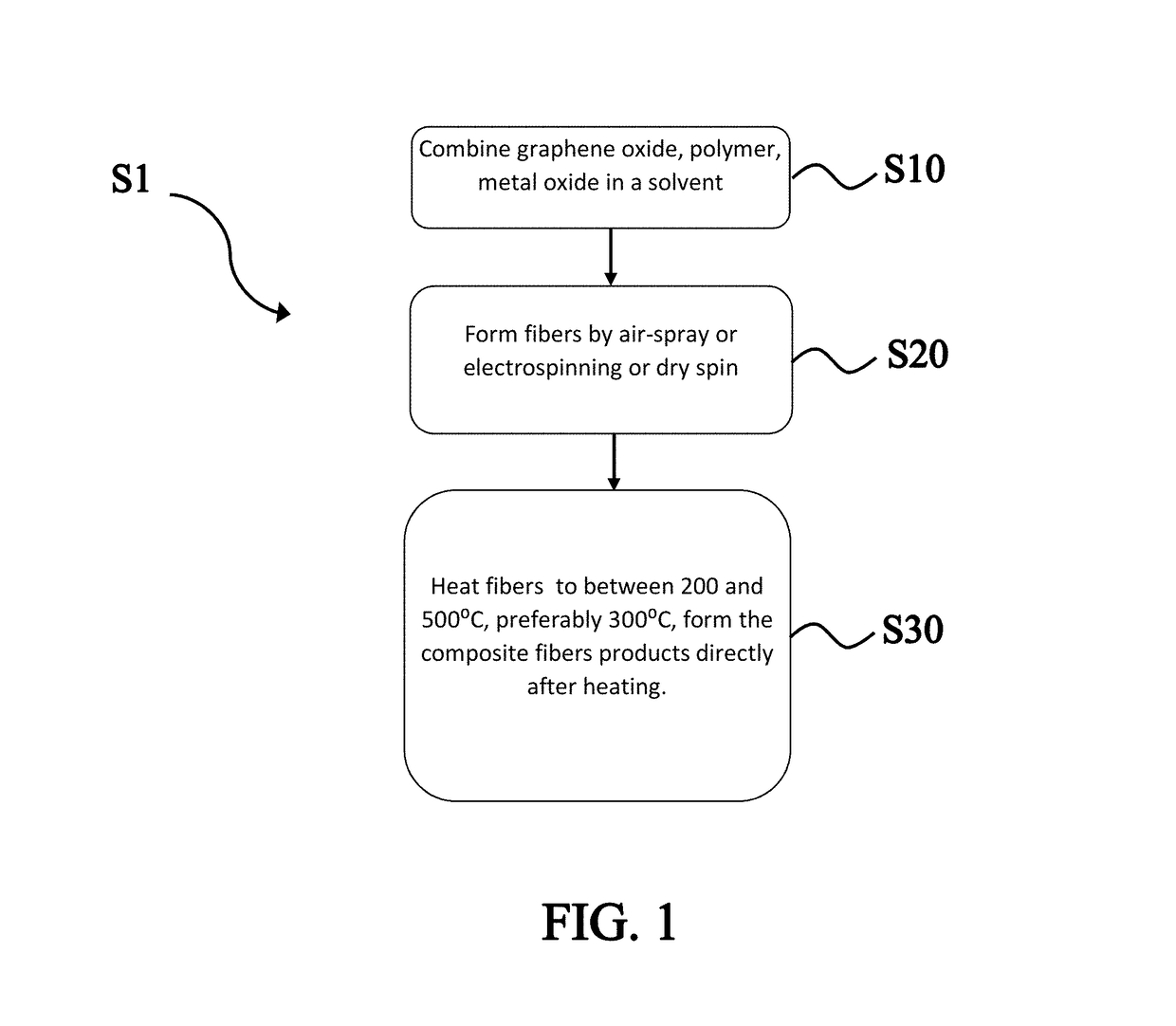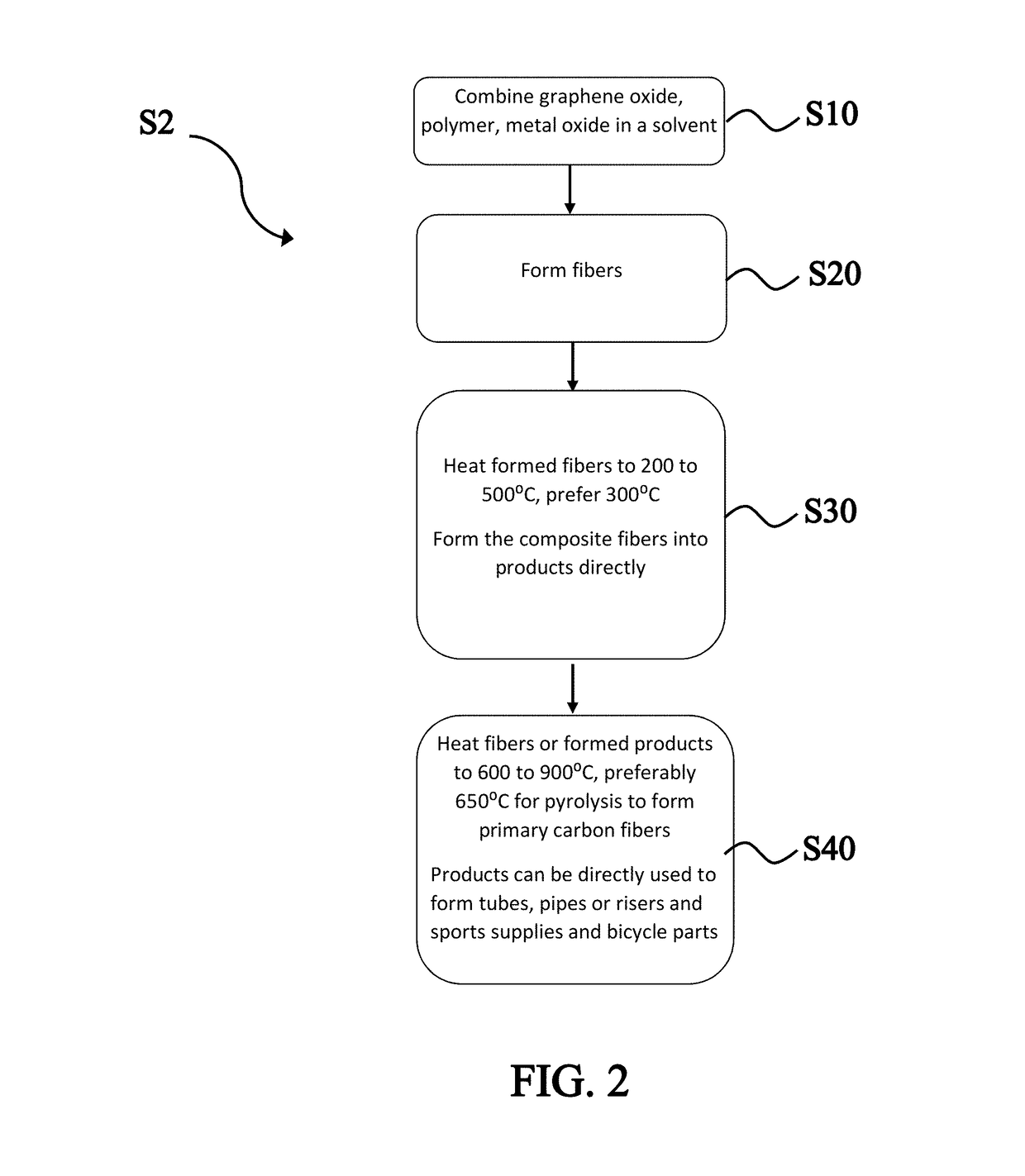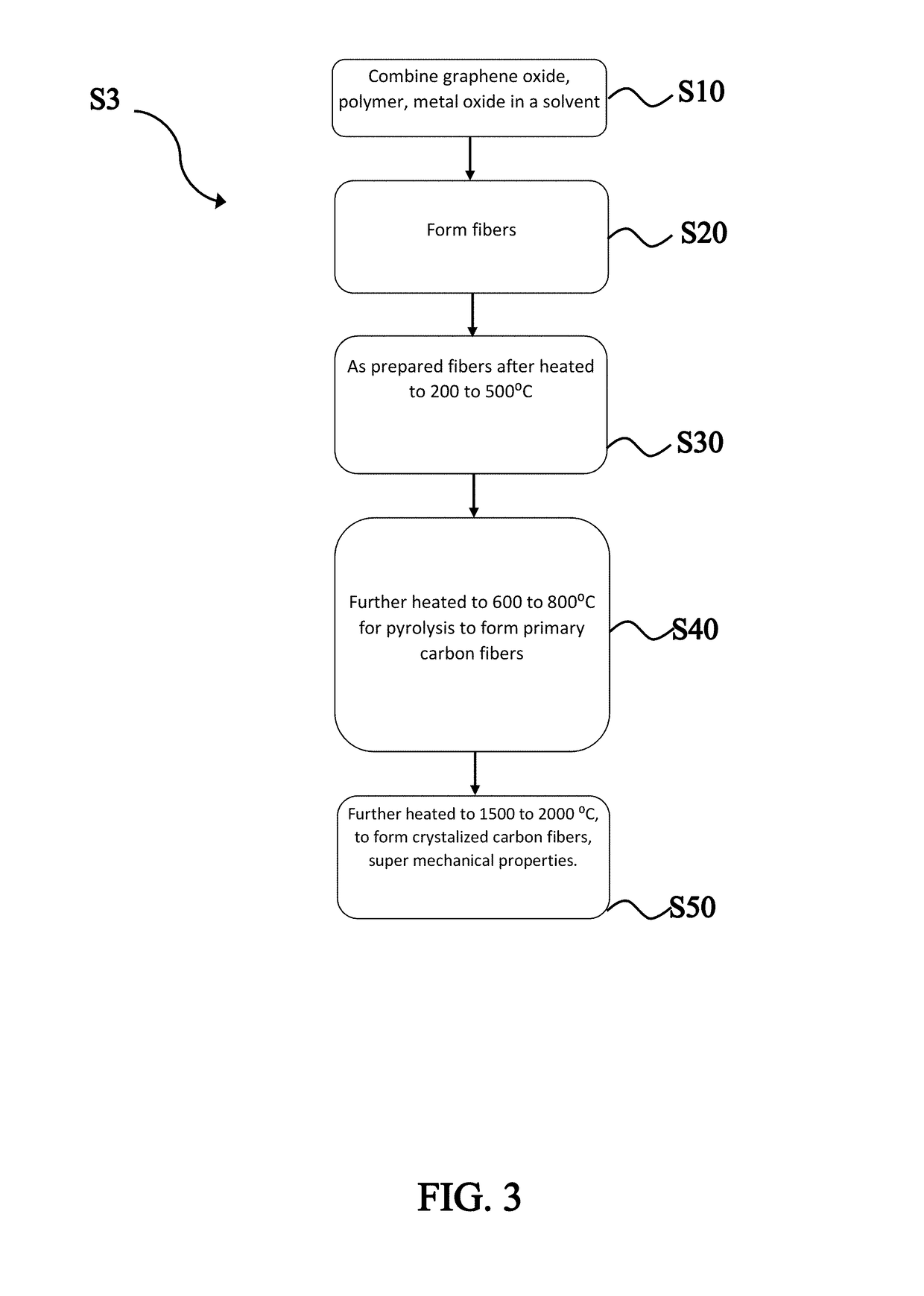Method to Massively Manufacture Carbon Fibers through Graphene Composites and the Use Thereof
- Summary
- Abstract
- Description
- Claims
- Application Information
AI Technical Summary
Benefits of technology
Problems solved by technology
Method used
Image
Examples
example 1
[0049]A cotton candy style spinning machine is used to melt a compound (such as that discussed herein) and spin it into precursor fibers. The compound was made by mixing over 30% (wt.) graphene oxide flakes in mass with a low melt point (<250° C.) polymer, such as candy powder, PLA, PVA, and other low melt point polymers listed herein, among others, in air. A trace of amount nickel (II) oxide (<5% in wt.) was added into the compound to function as Ni catalyst source for carbon fiber formation in post-treatment process. FIG. 6 provides a view of the compound melted, while FIG. 7 provides a view of an embodiment of the melt-spun fibers.
[0050]The precursor fibers were pulled out to form bundle fibers (FIG. 8), then put into a tube furnace with process of oxidation in air, carbonization with flowing nitrogen, and then followed by additional formation of multilayer graphene on the fibers under gases flow of hydrogen and methane, then annealed to remove defects and to form graphitic cryst...
example 2
[0051]A cellulose solution was prepared by dissolving nano-cellulose powder into an aqueous solution of mixture of nickel (II) hydroxide with 1,3-diaminopropane. Then a heavy mass load of graphene oxide nanoflake powders are dispersed in the nano cellulose mixture solution to form a uniform graphene nanoflake suspension. FIG. 9 shows the SEM image of a drop of this suspension as dried film showing the graphene oxide flakes dispersed uniformly by templating of nano celluloses.
[0052]Solution precursor fibers were prepared by directly spinning the mixture in air (FIGS. 10-12: air-drying spun fibers). After similar treatment as Example 1, the final fiber obtained at lower than 600° C. is 625 Mpa, and after annealed at 1600° C., its shows a tensile strength of 1773 Mpa (>1.5 Gpa). As can be seen in FIGS. 10-11, Graphene-oxide / nano-cellulose fibers are shown formed from solution spun in air.
example 3
[0053]Graphene oxide flakes were dispersed in the templating solution of diluted polyacrylonitrile (PAN) in dimethylformamide (DMF). Electrospinning was used to generate nanosized fibers (FIGS. 4 and 5), or solution drawing to form larger sized graphene oxide / PAN fibers (FIG. 11). Similar post-treatment as example 1 and 2 were performed.
[0054]The electro-spun fibers show a tensile strength of 2010 Mpa (>2 Gpa) after 1600° C. annealing, for example such as that described in example 1, while the drawn fibers when aligned (FIG. 11) gives tensile strength of 2586 Mpa (>2.5 Gpa) after the same post-treatment. The resulting carbon fibers obtained from the PAN-templated graphene composites can be seen in FIG. 11, having a composition of C:O:Ni≈92:7:1.
[0055]Further treatment the as-processed fibers from 1600° C. to 2000° C. should generate high performance carbon fibers that should have properties closed to conventional PAN fibers. In this invention, we prefer using lower temperature anneal...
PUM
| Property | Measurement | Unit |
|---|---|---|
| Temperature | aaaaa | aaaaa |
| Temperature | aaaaa | aaaaa |
| Temperature | aaaaa | aaaaa |
Abstract
Description
Claims
Application Information
 Login to View More
Login to View More - R&D
- Intellectual Property
- Life Sciences
- Materials
- Tech Scout
- Unparalleled Data Quality
- Higher Quality Content
- 60% Fewer Hallucinations
Browse by: Latest US Patents, China's latest patents, Technical Efficacy Thesaurus, Application Domain, Technology Topic, Popular Technical Reports.
© 2025 PatSnap. All rights reserved.Legal|Privacy policy|Modern Slavery Act Transparency Statement|Sitemap|About US| Contact US: help@patsnap.com



